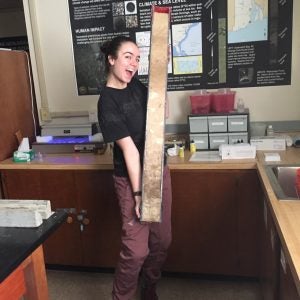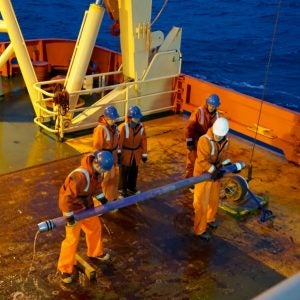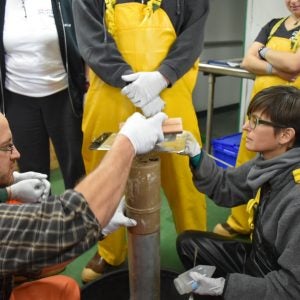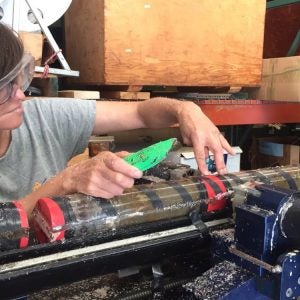The Robinson Biogeochemistry and Paleoceanography Lab is active both in the laboratory and in the field. Whether in the Southern Ocean collecting sediment cores and marine particles, to in-situ measurement of nitrous oxide flux, or careful measurement of diatom-bound nitrogen isotopes, we stay at the cutting edge of environmental analytical techniques – while at the same time remaining masters of tried and true techniques. Inquires about the labs capabilities should be directed to Dr. Rebecca Robinson or Roger Kelly.
Field sampling and in-situ Measurements
Sediment Coring
The Robinson Biogeochemistry and Paleoceanography Lab has extensive experience collecting and handling sediment cores, whether they be collected from the JOIDES Resolution, a UNOLS vessel, a URI small boat, or from standing knee-deep in water.
Large-volume in situ Pumping
Using McLane WTS-LV pumps, we have collected and processed marine particles at sea.
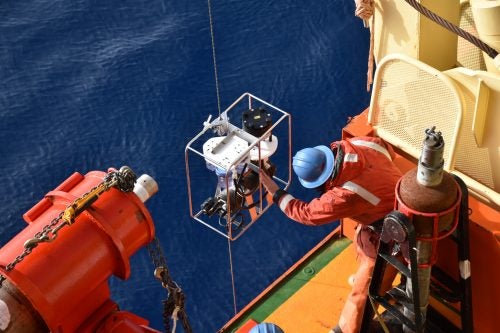
Benthic Chamber Experiments
Benthic fluxes of dissolved nutrients and gasses in the coastal marine environment can be measured using our benthic chamber lander equipped with a syringe sampling rosette and sensor manifold.
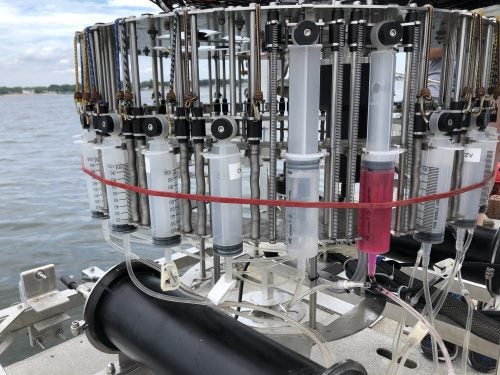
Laboratory Instrumentation and Measurements
Thermo Delta V-Advantage Isotope Ratio Mass Spectrometer
When coupled with our Costech 4010 Elemental Analyzer front end, we measure natural abundance dN15 and dC13 of solids (sediment, plant tissue, particulate matter, etc) EA.jpg
When coupled with our custom gasbench front end, we measure natural abundance dN15 and dO18 of nitrous oxide gas produced by denitrifying bacteria.
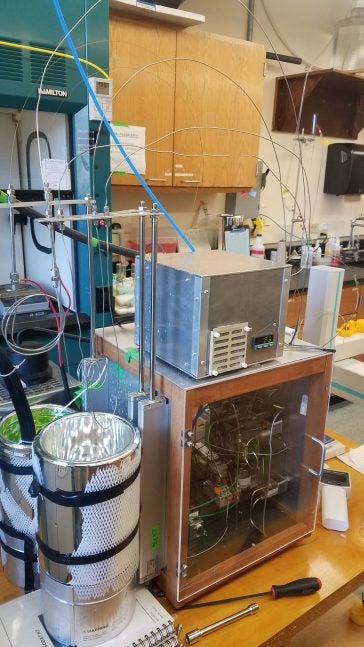
Thermo Delta V-Plus Isotope Ratio Mass Spectrometer
The Robinson Biogeochemistry and Paleoceanography lab has recently acquired a brand new DeltaV-Plus IRMS. It is currently coupled with our custom gasbench front end for measuring natural abundance dN15 and dO18 of nitrous oxide gas produced by denitrifying bacteria. A custom ‘heart-cut’ gasbench is under construction to nearly double our current sensitivity for dN15 and dO18 of nitrous oxide via con-flow.
Unisense microsensors
We have an array of both in situ and benchtop microsensors for analysis of pH, eH, O2, H2S, and N2O. These probes, in conjunction with a microprofiler, can be used to measure sediment core profiles of their respective analytes.
Teledyne Chemiluminescence NOx Analyzer
We have a capability to measure nitrate and nitrite in water samples using our ‘NOx Box’
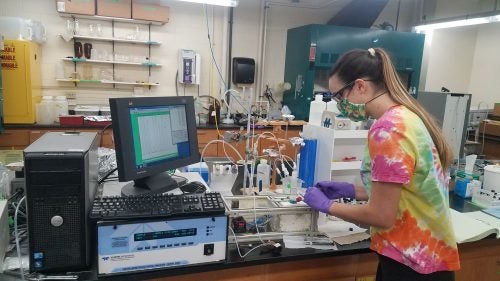
Radon-222 Emanation
Using a purge and trap system, we can extract Rn-222 from ground, estuarine, or open ocean water samples. This capacity is useful for evaluating coastal groundwater inputs, as well as open ocean air-sea gas exchange fluxes.
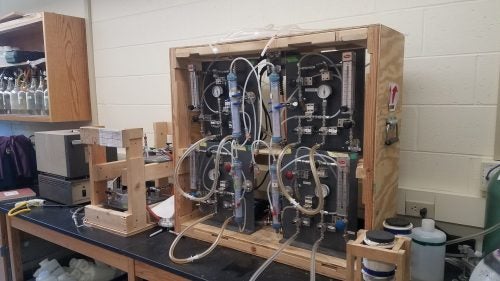
Radium Delayed Coincidence Counter (RaDeCC)
Short-lived radium isotopes (224Ra and 223Ra) are useful tracers of coastal and open ocean water exchange, and can be measured using our RaDeCC system.
Canberra Ultra-Low Background Gamma Spectrometer
Naturally occurring gamma-emitting radio-isotopes can be analyzed using our gamma spectrometer, including 210Pb, 234Th, 226Ra (via 214Pb), 137Cs, and 228Ra (via 228Ac). These tracers are useful for creating age models in high-deposition sediment cores, as well as estimating groundwater flux to the coastal marine environment.

